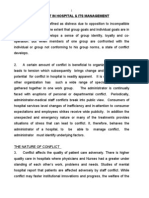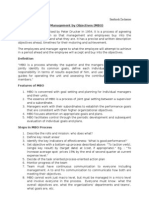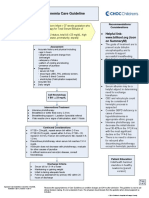Development of Human Sexuality
Development of Human Sexuality
Uploaded by
Nikhil MohanCopyright:
Available Formats
Development of Human Sexuality
Development of Human Sexuality
Uploaded by
Nikhil MohanOriginal Description:
Copyright
Available Formats
Share this document
Did you find this document useful?
Is this content inappropriate?
Copyright:
Available Formats
Development of Human Sexuality
Development of Human Sexuality
Uploaded by
Nikhil MohanCopyright:
Available Formats
DEVELOPMENT OF HUMAN SEXUALITY
Birth through Age 12
By age 2 or 2l-iyears, children know what gender they are. They know that they are like the parent of the same gender and different from the parent of the opposite gender and from other children of the opposite gender. They become acutely aware of anatomical gender differences during this time. By age 4 or 5, children engage in heterosexual play. "Playing doctor" can be a popular game at this age. In this way, children form a concept of marriage to a member of the opposite gender. Children increasingly gain experience with masturbation during childhood. Most children begin self-exploration genital self-stimulation at about 15 to 19 months. Late childhood and preadolescence may be characterized by heterosexual or homosexual play. Activity involves touching the others genitals and may include a wide range of sexual behaviours. Girls at this age become interested in menstruation, and both sexes are interested in learning about fertility, pregnancy and birth. Interest towards the opposite gender increases. Children of this age become self-conscious about their bodies and are concerned with physical attractiveness. Children ages 10 to 12 are preoccupied with pubertal changes and the beginnings romantic interest in the opposite gender. Prepubescent boys may engage in sexual activities such as genital exhibition or group masturbation. Prepubescent girls may engage in some genital exhibition.
Adolescence
Adolescence represents acceleration in terms of biological changes and psychosocial and sexual development. Biologically, puberty begins for the female adolescent with breast enlargement, widening of the hips, and growth of pubic and ancillary hair. The onset of menstruation usually occurs between the ages of 11 and 13 years.
In male adolescent, growth of pubic hair and enlargement of the testicles begin at 12 to 16 years of age. Penile growth and the ability to ejaculate usually occur from the ages of 13 to 17. There is a marked growth of the body between ages 11 and 17, accompanied by the growth of body and facial hair, increased muscle mass, and a deeper voice. Sexuality is slower to develop in the female than in the male adolescent. Women show steady increases in sexual responsiveness that peak in their middle 20s or early 30s.Sexualmaturity for men is usually reached in the late teens, but their sexual drive remains high through young adulthood. Masturbation is a common sexual activity among male and female adolescents. Adulthood This period of the life cycle begins at approximately 20 years of age and continues to age 65. Marital Sex Choosing a marital partner or developing a sexual relationship with another individual is one of the major tasks in the early years of this life-cycle stage. Intimacy in marriage is one of the most common forms of sexual expression for adults. The couples have coitus about two or three times on an average per week when they are in their 20s, with the frequency gradually declining to about once weekly for those 45 years of age and over. Many adults continue to masturbate even though they are married and have ready access to heterosexual sex. Extramarital Sex The estimates are that about a quarter to a half of married men and women have engaged in extramarital sex at some time during their marriages.
The "Middle" Years-40 to 65
With the advent of the middle years, a decrease in hormonal production initiates a number of changes in the sex organs, as well as the rest of the body. Menopausal changes in the woman began in around the around the age of 50.It includes decrease in the amount of oestrogen can result in loss of vaginal lubrication, making
intercourse painful. Other symptoms may include insomnia, "hot flashes," headaches, heart palpitations, and depression. Women stabilize at the same level of sexual activity as at the previous stage in the life cycle and often have a greater capacity for orgasm in middle adulthood than in young adulthood With the decrease of androgen production during these years, men also experience sexual changes. The amount of ejaculate may decrease, and ejaculation may be less forceful. The testes decrease in size, and erections may be less frequent and less rigid. By age 50, the refractory period increases, and men may require 8 to 24 hours after orgasm before another erection can be achieved. Biological drives decrease, and interest in sexual activity may decrease during these "middle" years. Although men need longer stimulation to reach orgasm and intensity of pleasure may decrease.
You might also like
- (W2) Worksheet 1. CREATING A STAFFING PLANDocument2 pages(W2) Worksheet 1. CREATING A STAFFING PLANJek Dela CruzNo ratings yet
- Learning Exercises Chapter 3Document7 pagesLearning Exercises Chapter 3Shadow RazeNo ratings yet
- Case StudyDocument14 pagesCase StudyKiratee JankeeNo ratings yet
- Client Rights & ResponsibilitiesDocument10 pagesClient Rights & ResponsibilitiesRuelRinconadaNo ratings yet
- CNO Professional Misconduct - StudentDocument30 pagesCNO Professional Misconduct - StudentdanushaNo ratings yet
- Conflict in HospitalDocument17 pagesConflict in HospitalAli AlamNo ratings yet
- Oppositional Defiant DisorderDocument2 pagesOppositional Defiant DisorderNikhil MohanNo ratings yet
- Mental RetardationDocument7 pagesMental RetardationNikhil MohanNo ratings yet
- Power of SupervisionDocument7 pagesPower of SupervisionKhenz MistalNo ratings yet
- Legal Issues in Psychiatric NursingDocument24 pagesLegal Issues in Psychiatric NursingRic TinNo ratings yet
- West Bengal Service RuleDocument84 pagesWest Bengal Service RulesukujeNo ratings yet
- Subject: Basics of HRM Assignment 4: (Solution)Document4 pagesSubject: Basics of HRM Assignment 4: (Solution)vishal sinhaNo ratings yet
- Theories of ManagementDocument9 pagesTheories of Managementbaby100% (1)
- Klay2 Somera CaseDocument2 pagesKlay2 Somera CaseHoneybell Dela CruzNo ratings yet
- Ethics Committee Roles and Responsibilities - by Dr. Shiva Murthy NDocument30 pagesEthics Committee Roles and Responsibilities - by Dr. Shiva Murthy NDr. Shiva Murthy NNo ratings yet
- Nursing Rounds/Visits: Presented By:-Pranay VekariaDocument29 pagesNursing Rounds/Visits: Presented By:-Pranay VekariaNurul AiniNo ratings yet
- Eating DisordersDocument28 pagesEating DisordersAndy Quilao SandovalNo ratings yet
- Nursing Management Process: By: Alyssa S. JavierDocument43 pagesNursing Management Process: By: Alyssa S. JavierAlyssa Santos JavierNo ratings yet
- Legal ResponsibilityDocument3 pagesLegal ResponsibilityLigaya Sabalde RebongNo ratings yet
- Functions of AdministrationDocument7 pagesFunctions of AdministrationarvindNo ratings yet
- Human RightsDocument112 pagesHuman RightsAKHILA PKNo ratings yet
- UNIT 1 Reaction PaperDocument3 pagesUNIT 1 Reaction PaperDeng Navarro PasionNo ratings yet
- WHO Safe PrescribingDocument16 pagesWHO Safe PrescribingAliyah NatasyaNo ratings yet
- Health Assessment #1Document15 pagesHealth Assessment #1Hazel Eñga Tiam WatNo ratings yet
- Keeping The Peace: Conflict Management Strategies For Nurse ManagersDocument5 pagesKeeping The Peace: Conflict Management Strategies For Nurse ManagersCressabelle CaburnayNo ratings yet
- Hsci 360 Long Term Care PPT Revised 9Document23 pagesHsci 360 Long Term Care PPT Revised 9api-249502229No ratings yet
- Scope of Nursing Practice eDocument3 pagesScope of Nursing Practice emrsclawzNo ratings yet
- 11 Core Competencies On Standards of Nursing PracticeDocument57 pages11 Core Competencies On Standards of Nursing PracticeJenny Soriano0% (1)
- The Trouble With A Budget Is That It's Hard To Fill Up One Hole Without Digging AnotherDocument11 pagesThe Trouble With A Budget Is That It's Hard To Fill Up One Hole Without Digging AnotherPrem DeepNo ratings yet
- DirectingDocument12 pagesDirectingTijo ThomasNo ratings yet
- Legalandethicalissuesincriticalcarenursing 130411224544 Phpapp02Document33 pagesLegalandethicalissuesincriticalcarenursing 130411224544 Phpapp02Guna RamyaNo ratings yet
- Schizophrenia Nursing Care PlanDocument8 pagesSchizophrenia Nursing Care PlanroseNo ratings yet
- Organizing in NursingDocument42 pagesOrganizing in NursingIvan Mendoza100% (2)
- Informed Consent eDocument3 pagesInformed Consent eJham Fernandez BeguejaNo ratings yet
- Management by Objectives (MBO)Document3 pagesManagement by Objectives (MBO)santhoshcmf50% (2)
- Informed Consent FormDocument7 pagesInformed Consent FormGohar MalikNo ratings yet
- CHN 2... Aniket......Document439 pagesCHN 2... Aniket......Basu ChikkarugiNo ratings yet
- Field Study 1: University of Caloocan CityDocument7 pagesField Study 1: University of Caloocan CityLovelyn MaristelaNo ratings yet
- Preventing Malnutrition in Older AdultsDocument3 pagesPreventing Malnutrition in Older AdultsLegendXNo ratings yet
- UNIT 13 Management of Educational InstitutionsDocument61 pagesUNIT 13 Management of Educational Institutionsvineeta.ashoknagarNo ratings yet
- Factors Affecting Student Nurses' Willingness To Care For Patients With HIV AIDSDocument14 pagesFactors Affecting Student Nurses' Willingness To Care For Patients With HIV AIDSGabz GabbyNo ratings yet
- Psychiatric Nurse's Role As Member of The Research TeamDocument3 pagesPsychiatric Nurse's Role As Member of The Research TeamKim Tango100% (1)
- Vices 2Document7 pagesVices 2Briccio Calingin IIINo ratings yet
- Presentation On Hospital Management PolicyDocument11 pagesPresentation On Hospital Management PolicyMiriam ChristopherNo ratings yet
- Inc Consumer Protection ActDocument4 pagesInc Consumer Protection Actanimesh pandaNo ratings yet
- The Medical Termination of Pregnancy Act, 1971Document1 pageThe Medical Termination of Pregnancy Act, 1971Suresh MuruganNo ratings yet
- Planning FinalDocument43 pagesPlanning Finaltownee03No ratings yet
- The Johari WindowDocument5 pagesThe Johari WindowMamta ParabNo ratings yet
- Group BehaviourDocument15 pagesGroup BehaviourCg RajuNo ratings yet
- Current Trend in NSG AdmDocument17 pagesCurrent Trend in NSG AdmAnusha Verghese100% (1)
- DisciplineDocument8 pagesDisciplineBrindaaubeelauckNo ratings yet
- Importance and Purposes of ResearchDocument3 pagesImportance and Purposes of ResearchKarl Kiw-isNo ratings yet
- Qualities of A Good NurseDocument3 pagesQualities of A Good NurseRichard Bidal100% (2)
- Personnel Policy: Mir Shai Mazar BalochDocument27 pagesPersonnel Policy: Mir Shai Mazar BalochTariq BezinjoNo ratings yet
- Informed ConsentDocument4 pagesInformed Consentnnaesor_1091No ratings yet
- Planning: Processes and TechniquesDocument18 pagesPlanning: Processes and TechniquesSunil JoshiNo ratings yet
- Nurse Patient InteractionDocument17 pagesNurse Patient InteractionAbigail MangaoangNo ratings yet
- Drug StudyDocument6 pagesDrug Studyi_existNo ratings yet
- Poly PharmacyDocument17 pagesPoly PharmacyAubrey ManimtimNo ratings yet
- WEEK 3 NCM 119 Nursing Process and Modalities of Nursing CareDocument12 pagesWEEK 3 NCM 119 Nursing Process and Modalities of Nursing CareCha DeseoNo ratings yet
- Effectiveness of Milieu Therapy To Patients As Perceived by The Nursing Students Assigned at The Cavite Center For Mental HealthDocument68 pagesEffectiveness of Milieu Therapy To Patients As Perceived by The Nursing Students Assigned at The Cavite Center For Mental Healthjeko23No ratings yet
- Adolesecent AgeDocument42 pagesAdolesecent Agecyrilsarmiento9100% (1)
- Puberty StageDocument2 pagesPuberty StageXielalah Sai SoonNo ratings yet
- Fiscal Planning, Budgeting & Management Expert, With A Strong Background in Finance/economics & Urban ManagementDocument3 pagesFiscal Planning, Budgeting & Management Expert, With A Strong Background in Finance/economics & Urban ManagementNikhil MohanNo ratings yet
- Dorothea Orem-Self Care TheoryDocument10 pagesDorothea Orem-Self Care TheoryNikhil MohanNo ratings yet
- Chest PhysiotherapyDocument7 pagesChest PhysiotherapyNikhil Mohan100% (1)
- Extended RoleDocument2 pagesExtended RoleNikhil MohanNo ratings yet
- Epidemiologi Fraktur Populasi JermanDocument8 pagesEpidemiologi Fraktur Populasi JermanAnonymous 7LMYdpEDy0No ratings yet
- OsceDocument100 pagesOsceTess WilliamsNo ratings yet
- Testicular TorsionDocument9 pagesTesticular TorsionSyedKashifAliNo ratings yet
- Medical-Surgical Nursing Exam 33 NLE Pre-Board (100 Items)Document17 pagesMedical-Surgical Nursing Exam 33 NLE Pre-Board (100 Items)Mimi VeeNo ratings yet
- Stevenson - Obituary BMJ 2007Document2 pagesStevenson - Obituary BMJ 2007José Antonio FranciscoNo ratings yet
- Karim - Going Beyond MDGs and 2015Document11 pagesKarim - Going Beyond MDGs and 2015Dhaka2012No ratings yet
- Hart Mariah Finalpractice Summary Paper 1Document14 pagesHart Mariah Finalpractice Summary Paper 1api-655030354No ratings yet
- Excision of A Sebaceous CystDocument3 pagesExcision of A Sebaceous CystSalim Mwaffaq AlhalholyNo ratings yet
- Of Client Having A Nephrectomy: Nursing CareDocument1 pageOf Client Having A Nephrectomy: Nursing CareJayshree ParmarNo ratings yet
- Hyper Bilirubin Emi A Care GuidelineDocument4 pagesHyper Bilirubin Emi A Care GuidelineDsk IndryNo ratings yet
- PowerPoint PresentationDocument20 pagesPowerPoint Presentationshravan kumarNo ratings yet
- Artificial Intelligence - The Future of Eye Screening - CERA PDFDocument2 pagesArtificial Intelligence - The Future of Eye Screening - CERA PDFtzhang88No ratings yet
- Urosepsis 1Document7 pagesUrosepsis 1Anonymous Xajh4w100% (1)
- Bulbar and Pseudobulbar Palsy: Search LITFL ..Document8 pagesBulbar and Pseudobulbar Palsy: Search LITFL ..Utkarsh ShahiNo ratings yet
- Pascal Magne-Anatomic Crown Widthlength Ratios of Unworn and Worn Maxillary TeethDocument10 pagesPascal Magne-Anatomic Crown Widthlength Ratios of Unworn and Worn Maxillary TeethCaleb LeonNo ratings yet
- BookDocument3 pagesBookNAVEEN SLNo ratings yet
- 4f4f3d97-3c1c-49d9-8f67-7c1bd1d9f142Document325 pages4f4f3d97-3c1c-49d9-8f67-7c1bd1d9f142James CapplemanNo ratings yet
- Hep B in PregnancyDocument42 pagesHep B in PregnancyAbraham ChiuNo ratings yet
- FroDocument5 pagesFrochinmayghaisasNo ratings yet
- RN Heals 4 RecruitmentDocument2 pagesRN Heals 4 RecruitmentJc JemzNo ratings yet
- Anatomy and Physiology of The Biliary SystemDocument5 pagesAnatomy and Physiology of The Biliary SystemstephenlopezNo ratings yet
- Anatomy of Inguinal Canal: DR Vishnu Mohan 29/11/2014Document51 pagesAnatomy of Inguinal Canal: DR Vishnu Mohan 29/11/2014abbasNo ratings yet
- Safe Recovery From AnaesthesiaDocument7 pagesSafe Recovery From AnaesthesiaKarthikNo ratings yet
- Madhavi Venigalla, MD Medical Oncology/Hematology Lakeland Regional Cancer CenterDocument26 pagesMadhavi Venigalla, MD Medical Oncology/Hematology Lakeland Regional Cancer Centerdikyhardiyansyah2No ratings yet
- Talipes Deformity or ClubfootDocument5 pagesTalipes Deformity or ClubfootcrisolandNo ratings yet
- Incontinence Case StudyDocument26 pagesIncontinence Case StudyRose Ann100% (1)
- Algo Pals Pediatric Cardiac ArrestDocument1 pageAlgo Pals Pediatric Cardiac ArrestDevi ChrestellaNo ratings yet
- Spirometer MIR Spirolab3Document4 pagesSpirometer MIR Spirolab3Dicky Budi Sugiarto100% (1)
- OB Hemorrhage Hospital Level Implementation Guide 7.21.10 PDFDocument53 pagesOB Hemorrhage Hospital Level Implementation Guide 7.21.10 PDFJefrey OspinaNo ratings yet































































































